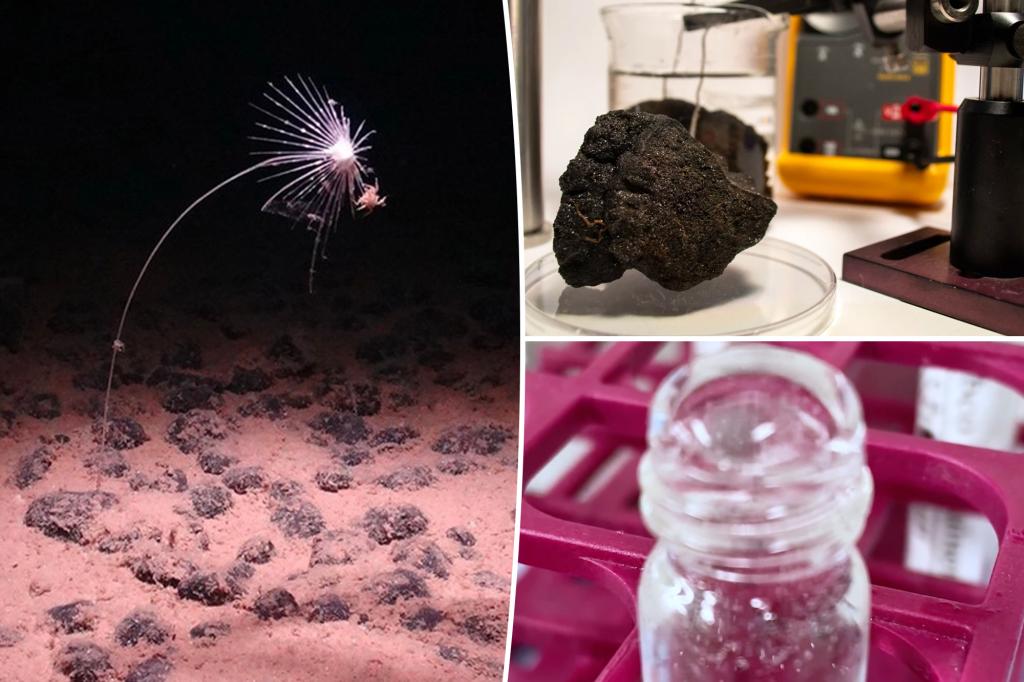The mystery of life on Earth may be deeper than we thought.
Scientists have discovered that metal nodules on the ocean floor produce oxygen in complete darkness without any help from living organisms, which could upend our understanding of the origins of life.
This eye-opening discovery was revealed in a groundbreaking study in the journal Nature Geoscience.
“I think we need to revisit questions like: where might aerobic life (life that requires oxygen) have started?” lead study author Andrew Sweetman, professor of seabed ecology at the Scottish Association for Marine Science (SAMS) in Oban , United Kingdom, said in a statement.
Sweetman and his team discovered the phenomenon called “dark oxygen” by accident while sampling the sea floor more than 13,000 feet down in a 1.7 million square mile stretch of sea floor located between Mexico and Hawaii.
They initially set out to assess the impact of mining the aforementioned scrap metals, including cobalt, nickel and rare earth metals such as cerium (a major component of some electronics).
However, while scanning the sea floor, the sensors detected mysterious oxygen emissions originating from the area.
This phenomenon seemed impossible given that the area was too deep for light to penetrate and therefore promote photosynthesis, the process by which plants and other organisms convert water and carbon dioxide into oxygen and energy.
However, this discovery marked the first time scientists had observed oxygen generation without the involvement of organisms.
Sweetman was so amazed by the finding that he “initially thought the sensors were faulty.”
“Every study ever done in the deep sea only shows oxygen consumption instead of production,” said the shocked scientist, who sent the equipment back to the manufacturer for testing, only to have them confirm it was working fine.
Sweetman found through subsequent experiments that the metal nodules create this “dark oxygen” through a process called seawater electrolysis.
This happens when seawater splits into oxygen and hydrogen while in the vicinity of an electrical charge, which in this case is provided by the highly charged metal ovals as a water battery.
“Only a voltage of 1.5 V is required to effect seawater electrolysis – the same voltage as a typical AA battery,” the authors wrote in the statement. “The team analyzed multiple nodes and recorded readings as low as 0.95 volts on the surfaces of some, meaning significant voltages can occur when the nodes are grouped together.”
In other words, nature is so metallic.
Ultimately, Sweetman believes this discovery could challenge our understanding of how life on Earth began approximately 3.7 billion years ago.
“For aerobic life to begin on a planet, there must be oxygen, and our understanding is that the oxygen supply to Earth was initiated by photosynthetic organisms,” he said. “But now we know that in the deep sea, where there is no light, oxygen is produced.”
This discovery also raises concerns about the potential environmental consequences of collecting metal lumps, which could provide a crucial source of oxygen for these deep-sea habitats.



